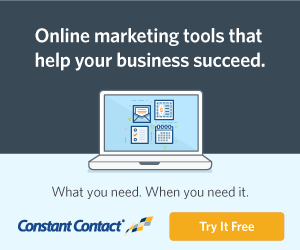You follow inspirational accounts and figures on Instagram and Facebook. You enjoy their posts and find yourself motivated by them. You have given them valuable placement within your newsfeed or social feeds.
Increasingly, I find myself gravitating toward content from somewhere other than my social feed -- my email inbox. Yes, email ... a place you protect dearly and are merciless with when it comes to deleting spam and excess. I'm not talking about the typical email "newsletter." Those are boring and get barely a glance from me.
I'm talking about a new generation of email. One made by creative and inspired millennials who understand that email can be cool again. Recently, I have found myself eager to check my email each morning as more content creators and influencers are creating content specifically for email but with a unique millennial flavor.
Here are my five favorite daily emails worth leaving room for in your inbox.
1. PRSUIT
PRSUIT is a daily email dedicated to self-development in a cool and relatable way. They say on their homepage that they don't want to talk about the business news, current events, The Kardashians or stock tips -- just helping their subscribers be their best selves. They send an email weekday mornings sourced from hundreds of contributors that focuses on helping you reach your potential. They're definitely bringing the "cool factor" back to email and I'm seeing their emails being forwarded everywhere these days.
2. MatterMark
Mattermark is a great email for those interested in startups and VC. It is a daily email that provides a curated digest of posts from investors and startup owners on all sorts of topics from pitch advice, scaling, investment advice and more. Definitely recommended if you're interested in startups from both the perspective of startup CEOs and VCs/investors.
3. Coinzy
Coinzy is a twice-daily newsletter for those interested in the world of cryptocurrencies. (And let's face it -- who isn't these days!) Once in the morning, and once in the afternoon, you'll get all the latest news about what's going on with Bitcoin and all the other exciting cryptos out there. The newsletter is clean and to-the-point, without the fluff.
4. The Skimm
The Skimm has been around for awhile and is well known for its daily, five-minute rundown of what's happening in the world. It's a hit particularly with millennial women who want to keep up with important events.
5. I Will Teach You To Be Rich
The I Will Teach You To Be Rich newsletter from well-known entrepreneur and marketer Ramit Sethi sends a good variety of topics ranging from financial insights, psychology topics, case studies and entrepreneurial tips. Ramit does a great job of keeping things personal and transparent, often offering insight into his own life, companies and clients.
Source: https://www.entrepreneur.com/
Image Credit: Hero Images | Getty Images
ABOUT WNFP
Westchester Networking for Professionals (WNFP) is a business organization focused on providing our members and guests with an extraordinary networking experience, bringing business professionals together for the sole purpose of generating new relationships and developing new business opportunities. Not a member, learn how you can become a member and join this awesome group of professionals to connect and grow your business.
Stay Connected with WNFP!

PRSUIT is a daily email dedicated to self-development in a cool and relatable way. They say on their homepage that they don't want to talk about the business news, current events, The Kardashians or stock tips -- just helping their subscribers be their best selves. They send an email weekday mornings sourced from hundreds of contributors that focuses on helping you reach your potential. They're definitely bringing the "cool factor" back to email and I'm seeing their emails being forwarded everywhere these days.
2. MatterMark
Mattermark is a great email for those interested in startups and VC. It is a daily email that provides a curated digest of posts from investors and startup owners on all sorts of topics from pitch advice, scaling, investment advice and more. Definitely recommended if you're interested in startups from both the perspective of startup CEOs and VCs/investors.
3. Coinzy
Coinzy is a twice-daily newsletter for those interested in the world of cryptocurrencies. (And let's face it -- who isn't these days!) Once in the morning, and once in the afternoon, you'll get all the latest news about what's going on with Bitcoin and all the other exciting cryptos out there. The newsletter is clean and to-the-point, without the fluff.
4. The Skimm
The Skimm has been around for awhile and is well known for its daily, five-minute rundown of what's happening in the world. It's a hit particularly with millennial women who want to keep up with important events.
5. I Will Teach You To Be Rich
The I Will Teach You To Be Rich newsletter from well-known entrepreneur and marketer Ramit Sethi sends a good variety of topics ranging from financial insights, psychology topics, case studies and entrepreneurial tips. Ramit does a great job of keeping things personal and transparent, often offering insight into his own life, companies and clients.
Source: https://www.entrepreneur.com/
Image Credit: Hero Images | Getty Images
ABOUT WNFP
Westchester Networking for Professionals (WNFP) is a business organization focused on providing our members and guests with an extraordinary networking experience, bringing business professionals together for the sole purpose of generating new relationships and developing new business opportunities. Not a member, learn how you can become a member and join this awesome group of professionals to connect and grow your business.
Stay Connected with WNFP!

































